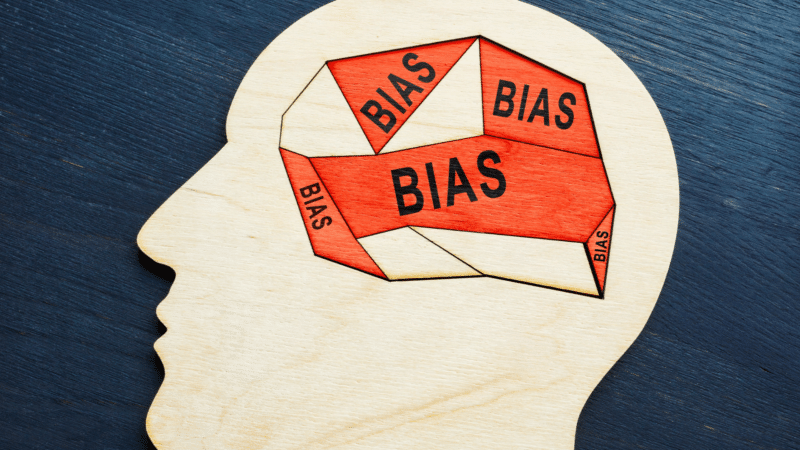As a marketer, you can get your customers to click on a button, pick up the phone or make a purchase. And it doesn’t stop there. You can trigger emotions, feelings and thoughts. You can influence a series of complex behaviors that support your brand over a long period.
How do you craft a strategy that drives customer behavior throughout a campaign — and beyond? It starts by understanding how your customers’ brains will most likely respond to creative work.
In previous articles, I wrote about how you can create marketing assets that trigger specific responses in the brain, such as:
In addition, I wrote about how you can tap into cognitive biases that influence customer decisions:
To generate the most significant returns from your marketing efforts, it’s clear that you need to get inside your customers’ heads. But to do this effectively, you need to get out of yours. As a result, this article highlights cognitive biases that might prevent you from connecting with your customers optimally.
Fundamental attribution error
Lee Ross, psychologist and Stanford University professor, published “The Intuitive Psychologist and His Shortcoming: Distortions in the Attribution Process” in 1977. Ross’s paper describes an ordinary person attempting to make sense of the world by interpreting “his own behaviors and the actions of others.”
The fundamental attribution error refers to a person’s tendency to attribute certain behaviors to a flaw in character or disposition instead of external or situational factors, according to Ross. A hypothetical scenario might help gain perspective on a bias contributing to losing perspective.
Imagine you’re heading to a meeting in which you’re going to present your new campaign idea. The meeting is important — and everyone is waiting for your insights.
Upon entering the conference room, you notice an empty seat from a key team member. After starting your presentation, the missing co-worker walks through the door and sits. You’re frustrated. How could someone join an important meeting 20 minutes late? But, you regroup and turn your focus to the presentation, dismissing the late-arriving co-worker as lazy and disrespectful.
As you proceed with your presentation, you’re only making eye contact with the people who were decent enough to show up on time. It’s a strong reaction because your values don’t align with your co-worker. But is it possible that external circumstances caused your co-worker to arrive late?
Unbeknownst to you, in this scenario, your co-worker had to pick up her mom at the hospital before the meeting. Your co-worker even called the hospital to confirm the time to arrive. Upon arriving on time, however, your co-worker was told that the information she received over the phone was incorrect and that she would have to wait an additional 20 minutes until her mom was discharged.
In this hypothetical scenario, you were quick to attribute the late arrival to internal quality. It’s a normal response. But it often prevents us from accurately understanding the people we interact with. Therefore, when attempting to understand behavior, it’s important to remember that the fundamental attribution error can lead to faulty conclusions.
There’s another interesting aspect of the fundamental attribution error. You’re more likely to blame external circumstances when your behavior is questionable. According to Ross, you justify your actions as part of the “asymmetry of positive and negative outcomes,” which means you’re more likely to give yourself a pass for the same behavior.
How does this affect your role as a marketing leader? As part of your job, you must understand your customers — and that involves understanding the underlying factors that lead to different behaviors. Even when assessing an audience in the aggregate, you must accurately understand the interplay between internal and external drivers of behavior.
Remember, you’re able to yield the greatest level of influence by understanding your audience most completely — and that involves an understanding of how you might inadvertently attribute incorrect qualities to your buyer personas.
Apophenia in marketing analytics
The world’s weight rests on your shoulders, like the titan Atlas, to connect the impact of your creative work to bottom-line success. As you evaluate your marketing metrics, you’re eager to connect your analytics and your campaigns. After all, you get paid to change attitudes, beliefs and perceptions — and there’s a heavy price for failure.
Can you prove that you’re responsible for increasing clicks, likes, buys and more? If you see a change in data that corresponds to the timing of one of your campaigns, you can be certain that it’s a result of your brilliant marketing insights, right? Possibly. But not necessarily.
Enter apophenia, a cognitive bias pertaining to creating meaningful connections between unrelated phenomena. It was first described in 1958 by Klaus Conrad, a psychiatrist and neurologist who was treating patients with schizophrenia. But apophenia isn’t confined to the DSM-5-TR, as it’s common to nearly everyone, including you.
Have you ever seen shapes in the clouds? How about a face in a random place, such as a wall or a piece of food? Pareidolia, for example, is a visual form of apophenia — and it’s the reason why you tend to see faces in random objects.
The philosopher and scientist Francis Bacon pondered the human propensity to conjure a more orderly world than what exists. “Human understanding is of its own nature prone to suppose the existence of more order and regularity in the world than it finds,” as noted in his Novum Organum in 1620.
In the 21st century, researchers are learning the extent to which pattern recognition is part of what makes humans unique. As Mark Mattson, professor of Neuroscience at the Johns Hopkins University School of Medicine, puts it, pattern processing is “the essence of the evolved human brain.”
Given that your brain is designed to detect patterns — and you’re highly motivated to identify positive results in your data — you might be particularly receptive to assigning value to where value doesn’t exist.
When you notice an improvement in your analytics, take a moment to challenge it. Are you able to untangle a connection that might actually benefit you? At the end of the day, you need to understand your data accurately. And yes, that’s more important than delivering a positive recap to the rest of the organization about the impact of your more recent marketing work.
Remember, you’ll be able to do your best work after you understand every aspect of your audience and their corresponding behaviors, which involves an accurate interpretation of your data. In short, your analytics might tell an interesting story about your marketing brilliance — or it might not tell you anything at all.
Be aware of your own cognitive biases
When you attempt to understand behavior — whether a customer, co-worker or even yourself — it’s important to remember that the human brain tends to conclude quickly and often inaccurately.
You can leverage cognitive biases and novel marketing tactics to influence customer behavior. But keep in mind that you’re also prone to making faulty judgments due to the flawed hardware inside your own head.
Get MarTech! Daily. Free. In your inbox.
Opinions expressed in this article are those of the guest author and not necessarily MarTech. Staff authors are listed here.








































































